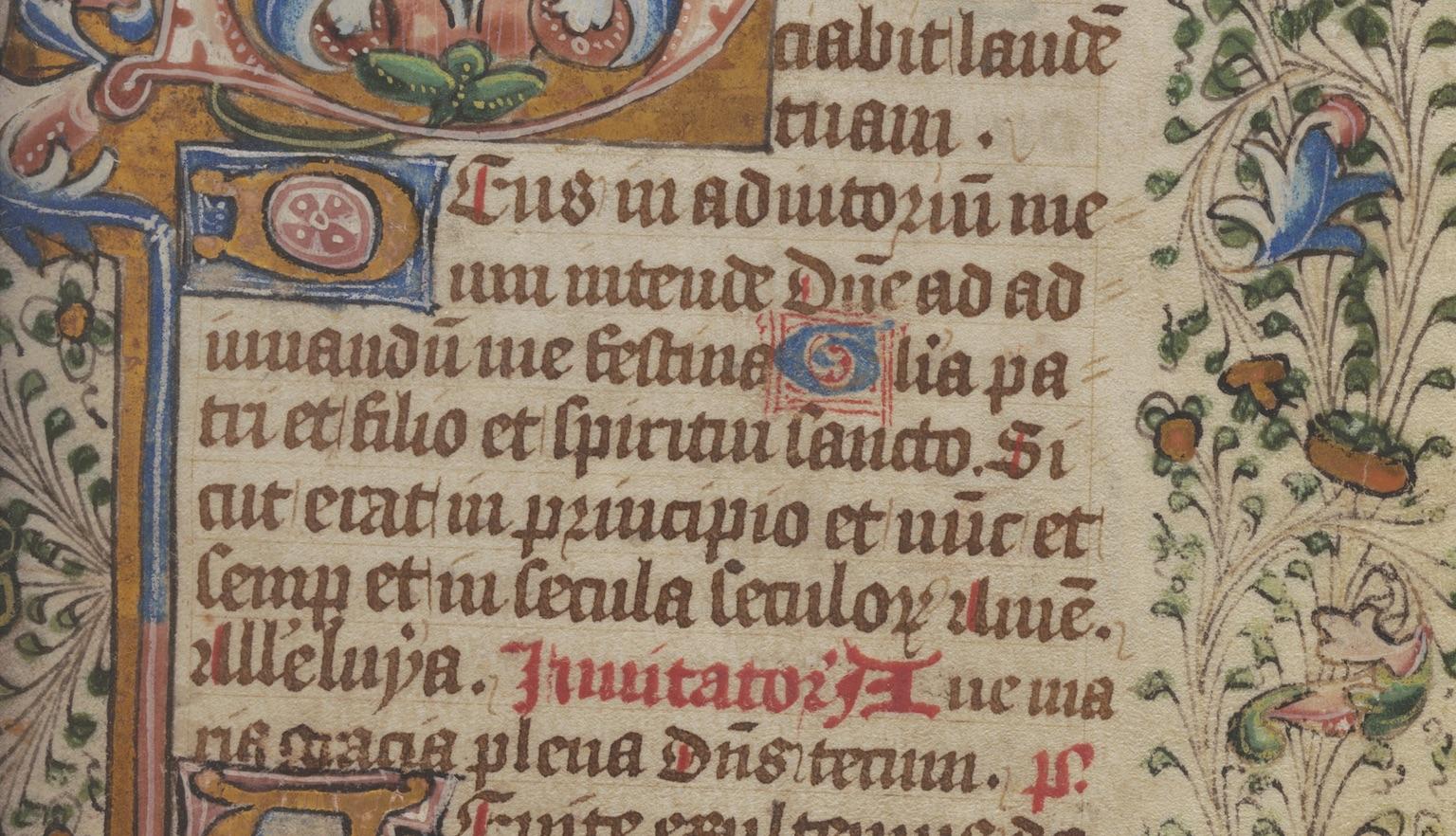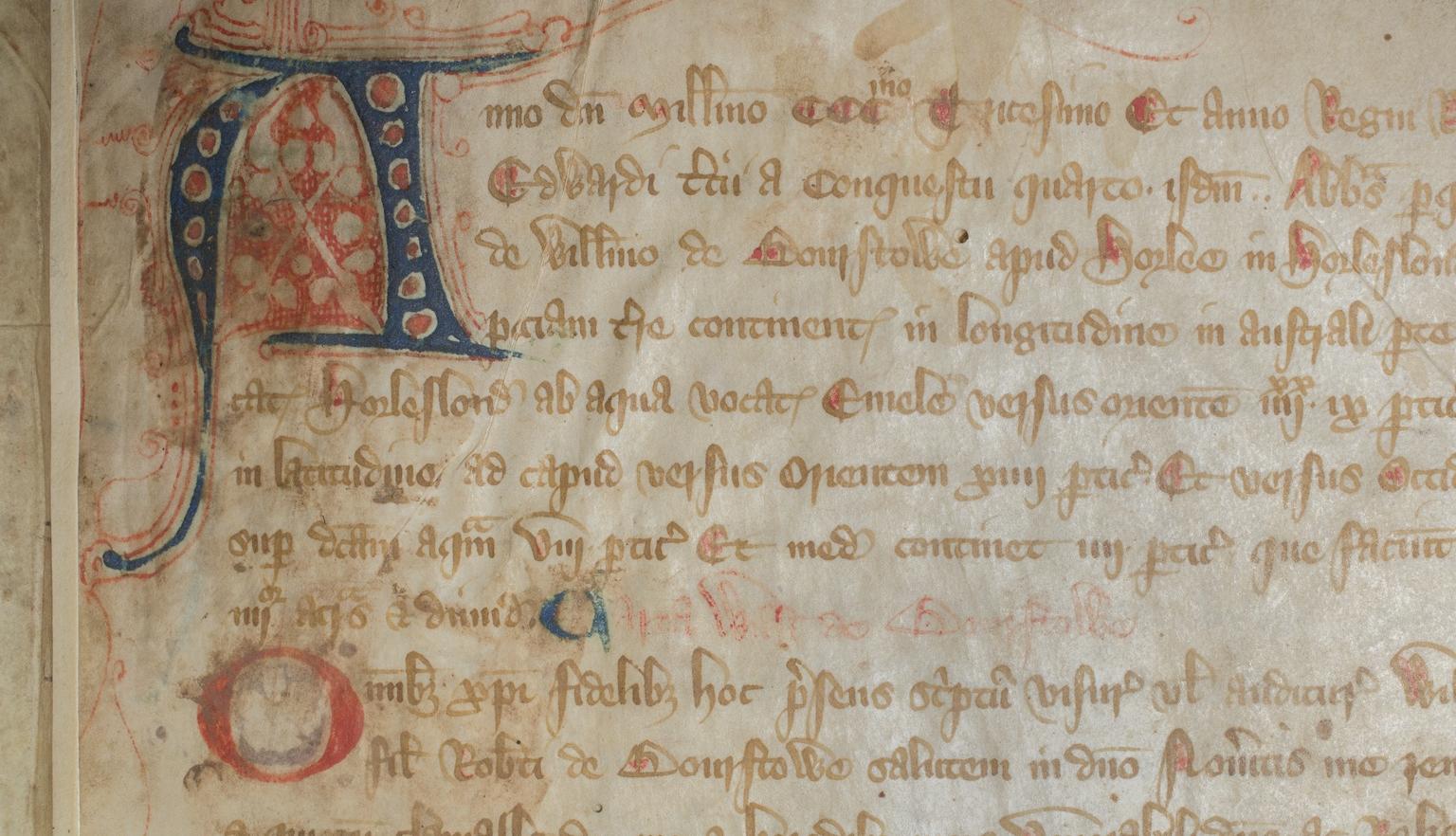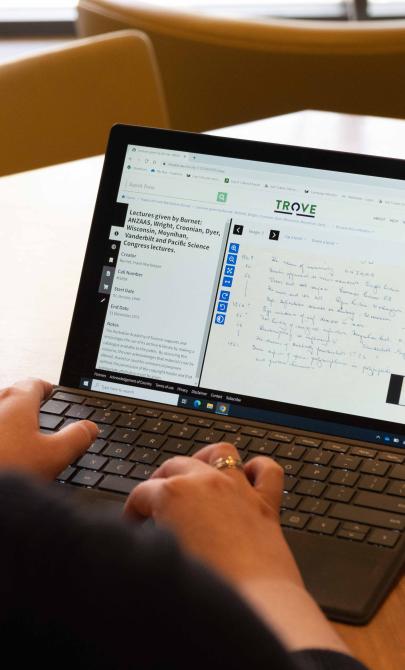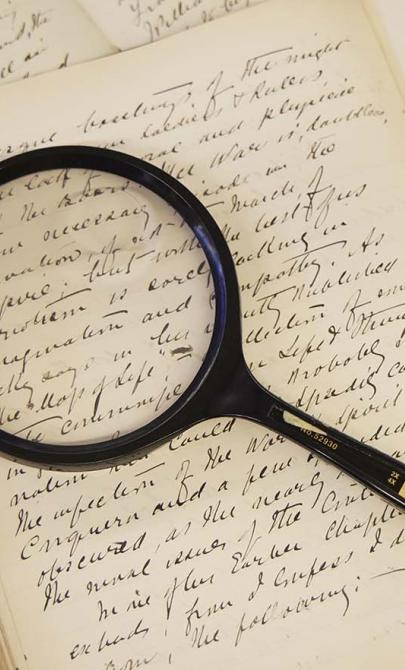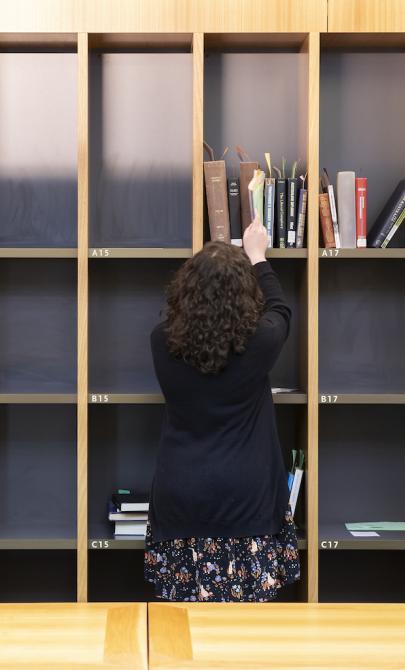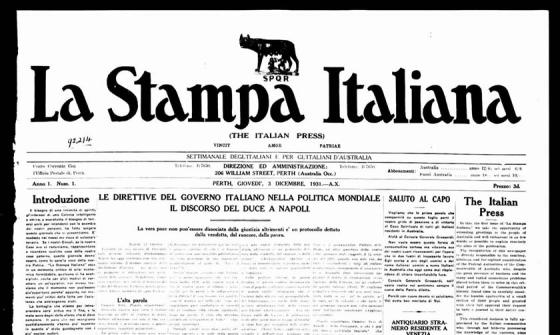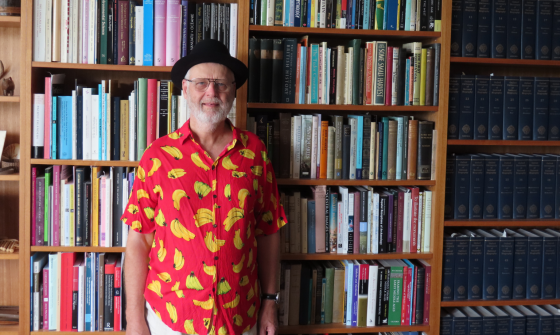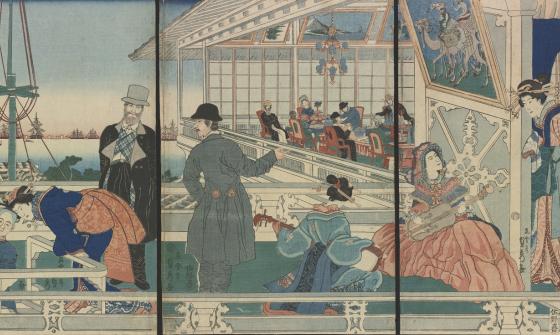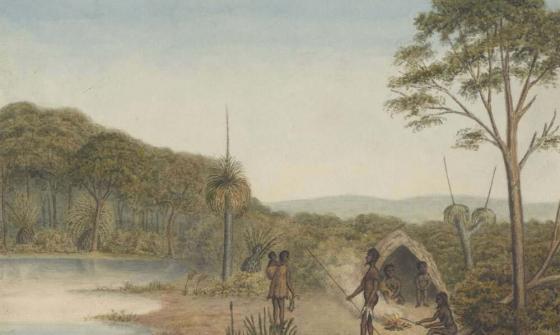Clifford Collection
Collection highlights
Key items in the collection
Highlights from this collection demonstrate its historical significance and variety.
Assembled over three centuries, the Clifford Collection is the largest family library to have been acquired by the Library. It contains over 10,000 volumes and 1500 pamphlets (about 6430 titles), written in English, Latin, French, Italian, German and Spanish, with particular strength in the seventeenth and eighteenth centuries. Reflecting the interests of many different family members, it is broad in its coverage: Greek and Latin classics, ancient history, British history, local history, European history, heraldry, genealogy, biography, politics, religion, theology, church history, philosophy, law, economics, land management, agriculture, animal husbandry, gardening, botany, medicine, optics, astronomy, architecture, art, music, exploration, travel and literature.
The following are examples of early imprints in the collection:
- Homeliarius Doctorum, Nuremberg, 1494
- Geremia, Peter, Divinum Petri hieremie opus, Brescia, 1502
- Mazocchi, Jacopo, Epigrammata antiqvae vrbis , Rome, 1521
- Sallust, Opera Sallustiana, Lyons, 1526
- Ioannes Frobenius candido lectori S. D. En Novum testamentum, ex Erassi Roterodami recognitione, Basel, 1527
- Dűrer, Albrecht, Clariss: pictoris et geometrae Alberti Dureri De varietate figurarum et flexuris partium ac gestib, Nuremberg, 1534
- Hardying, John, The chronicle of John Hardying in Metre, London, 1543
- Pollio, Vitruvius, M. Vitruvii viri suae professionis peritissimi, de architectura libri decem, Strasbourg, 1543
- Stumpf, Johannes, Gemeiner loblicher Eydgnoschaft Stetten/Landen und Voelckeren Chronickwirdiger thaaten beschreybung, 2 vols in 1, Zurich, 1548
- Demosthenes, Demosthenis oratorum Graeciae principis opera, Basle [c. 1549]
- Alberti, Leandro, Descrittione de tutta Italia, Bologna, 1550
- Hall, Edward, The chronicle of England, London, 1550
- Machiavelli, Niccolo, Tutte le opera di Nicollo Machiavelli, 5 vols in 1, 1550
- More, Thomas, The Workes of Sir Thomas More Knyght, Sometime Lorde Chancellour of England, London, 1557.
Religion and philosophy
While there are standard works on theology, such as writings of Thomas Aquinas and Thomas à Kempis, the great majority of religious works are of a devotional kind, including sermons, liturgies, breviaries, prayer books, catechisms and lives of the saints. There is a copy of the Rheims New Testament of 1582, the first English translation from the Vulgate (often known as the Douay-Rheims Bible). There are also a large number of tracts, some of them relating to the Test Acts and the relations between church and state.
English and Scottish historians
The collection is strong in publications of English and Scottish historians, including George Buchanan, Gilbert Burnet, William Camden, Lord Clarendon, William Dugdale, Edward Gibbon, David Hume, Peter Heylyn, Richard Knolles, Walter Raleigh, William Robertson, Tobias Smollett and John Speed. Other scholarly English writers represented in the collection are Francis Bacon, Edward Coke, Charles Darwin, Erasmus Darwin, Samuel Johnson, Isaac Newton, William Petty, John Selden and Adam Smith.
Art and architecture
There are a number of books on art and architecture, some of them with lavish illustrations, by such writers and artists as Colin Campbell, William Gilpin, Andrea Palladio, Giambattista Piranesi, Joshua Reynolds and Johann Joachim Winckelmann.
Literature
The collection contains a diversity of literary works, many by obscure writers and others by famous figures such as Samuel Butler, Lord Chesterfield, Jeremy Collier, William Congreve, John Dryden, Maria Edgeworth, John Evelyn, Oliver Goldsmith, Ben Jonson, John Milton, Samuel Richardson, Jonathan Swift, James Thomson and Walter Scott. European writers include Giovanni Boccaccio, Luis de Camoens, Baldassare Castiglione, Dante Alighieri, Johann Wolfgang von Goethe, Molière, Michel de Montaigne, Jean Racine, Jean-Jacques Rousseau and Voltaire.
French history
Another strength of the collection is French history and political and economic affairs. Some examples are books by the historians Henri de Boulainvilliers, Jean de Launoy and Abbé de Mably, the theologians Jacques-Bénigne Bossuet and François de Fenelon, the banker and finance minister Jacques Necker, the politicians Lazare Carnot and the Comte de Mirabeau, and the agronomist Antoine-Augustin Parmentier.
Pamphlets
The large number of pamphlets in the Clifford Collection were mostly published between 1750 and 1850. They deal with an extraordinary range of subjects: Catholic emancipation, the French Revolution, the Royal Navy, the government of Ireland, Indian affairs, colonies, parliamentary reform, the slavery question, Catholic education, the employment of children in factories, public health, agriculture, inventions and the repeal of the Corn Laws.
The most famous item in the Clifford Collection is the Chertsey Cartulary, the only medieval cartulary held in Australia and one of a very small number held outside Britain. It is a volume containing charters, accounts and property transactions of St Peter’s Benedictine Abbey at Chertsey, Surrey, between 1312 and 1345. During this period John de Rutherwyk was abbot and the abbey, which was probably founded in Saxon times, was extremely prosperous. The cartulary was bound by Sydney Cockerell.
The collection contains nine other medieval manuscripts, seven of which are illuminated. They are devotional works—Bibles, books of hours, a prayer book, a breviary, a psalter—executed in England, France, Italy, Germany and the Netherlands between the thirteenth and fifteenth centuries. In most instances, the bindings are of a later date. Two of the books of hours (MS 1097/5, 9) contain full-page miniatures of Biblical scenes and saints and are works of great beauty.
Most of the other manuscripts in the collection, dating from the sixteenth to the nineteenth centuries, are of a religious and devotional nature. They include an original manuscript by Gregory Martin (d. 1582) entitled Roma Sancta and manuscripts by George Oliver on the history of Catholicism in Devon and Cornwall. Other works deal with the poor laws, prisons, hospitals, freemasonry, legal disputes, the Civil War and the defence of Devon during the war with France (1794–1802).
Of special interest is a nineteenth-century manuscript catalogue of the library of Lord Clifford (RBf CLI 4263).
A small number of documents of the Clifford family are to be found in the collection. They include a commonplace book of the 1st Baron Clifford and his horoscope (1670), manuscripts by the 6th Baron on the lives of saints, financial accounts of estates of Lord Clifford in other counties (1748–50), verse written to celebrate the return of Lord Clifford to the House of Lords (c. 1831), a sketch book of Walter Clifford (1872) and a farm ledger (1844–1915).
About the Clifford family
Early history and rise to nobility
The Clifford family of Chudleigh, Devon, were a cadet branch of the medieval Clifford family who came to England at the time of the Norman Conquest. In 1552, Sir Piers Courtenay left Ugbrooke Park to his daughter Anne, who was married to Anthony Clifford. Their grandson, Sir Thomas Clifford (1630–1673), served as a parliamentarian, soldier and adviser to Charles II. He held several senior positions including Comptroller of the Household (1666–68), Treasurer of the Household (1668–72) and Lord High Treasurer (1772–73), and was created Baron Clifford of Chudleigh in 1772.
Sir Thomas resigned his offices due to the 1772 Test Act, which required office-holders to take Anglican communion. He and his descendants openly practised Roman Catholicism.
Life under Catholic restrictions
Until the Catholic Relief Act of 1829, the Clifford family were barred from holding public or military office and from sitting in the House of Lords. During this period, they focused on managing their estate, writing histories and scholarly works, and collecting artworks, manuscripts, books and pamphlets. Sons were typically educated on the Continent, particularly at the English Jesuit Academy at Liège, the English Academy at Douai, and in Rome. Several entered the priesthood, including William Clifford, son of the 7th Baron, who was Bishop of Clifton from 1857 to 1893.
Public service and family connections
After Catholic Emancipation, the Cliffords again held positions in public life. Notably, Sir Hugh Clifford (1866–1941) and Sir Bede Clifford (1890–1961) served as colonial governors. The family also had connections to the Weld family, including Cardinal Thomas Weld (1773–1837), many of whose possessions were kept in the Cardinal’s room at Ugbrooke.
Ugbrooke Park and architectural legacy
Originally a small Tudor house, Ugbrooke Park was significantly remodelled over time. The 1st Baron began the rebuilding and consecrated a chapel to St Cyprian in 1671. In 1760, the 4th Baron commissioned Robert Adam to design a new house that incorporated parts of the old structure. The new house had two storeys and formed a square with towers at each corner, with the library and chapel occupying one wing. The parklands were expanded and landscaped by Lancelot (Capability) Brown. Further renovations to the house and park continued through the 19th century.
Background to the collection
The Clifford Collection was purchased in 1963 from Hugh Clifford, later 13th Baron Clifford. Hugh Clifford had lived in Australia in his younger days, following the marriage of his father to May Knox, the daughter of the Chief Justice, Sir Adrian Knox. One item in the collection, the Chertsey Cartulary, was not received until 1974, when an export licence was granted by the British Government.
All the books in the Clifford Collection, including the small number of modern books, are kept together in the Rare Books Collection. The books have been catalogued individually and the call numbers have the prefixes RB CLI, RBq CLI, RBf CLI and RBef CLI.
The manuscripts and personal documents are held in the Manuscripts Collection. They have been catalogued as a collection and you can used the finding aid. More detailed descriptions of the 10 medieval manuscripts can be found in:
- KV Sinclair, Descriptive catalogue of medieval and renaissance western manuscripts in Australia, Sydney University Press, Sydney, [1969].
The illuminated manuscripts are described in detail in:
- Margaret M Manion and Vera F Vines, Medieval and Renaissance illuminated manuscripts in Australian collections, Thames and Hudson, Melbourne, 1984
Other cartularies of Chertsey Abbey are held in the British Library (Lansdowne 435) and the National Archives in London (E 164/29).
This guide was prepared using these references:
- Chertsey Abbey cartularies, volume II, part I: being the second portion of the Cartulary in the Public Record Office, Surrey Record Society, Frome, 1958.
- Chertsey cartularies, volume II, part 2: being extracts from British Museum Lansdowne MS. 435 and the Clifford Cartulary, together with index to volume II, Surrey Record Society, Frome, 1963.
- Ronald Hutton, Thomas Clifford, First Baron Clifford of Chudleigh, Oxford Dictionary of National Biography, vol. 12, Oxford University Press, Oxford, 2004, pp. 115–19.
- Mary Jones, The history of Chudleigh, Devon: with a description of the surrounding scenery, seats, families etc., S. Drayton & Sons, Exeter, 1875.
- Charles Moseley (ed.), Burke’s peerage and baronetage, vol. 1, Delaware, Wilmington, 2003, pp. 821–3.
- Ugbrooke House: www.ugbrooke.co.uk/
